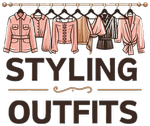In an era dominated by fast fashion and fleeting trends, there’s a growing movement that cherishes the elegance, quality, and stories woven into garments from bygone eras. Vintage fashion isn’t just a style choice; it’s a celebration of history, craftsmanship, and individuality. This article will take you on a captivating journey through the world of vintage fashion, exploring its rich history, enduring appeal, and how you can incorporate these timeless pieces into your wardrobe.
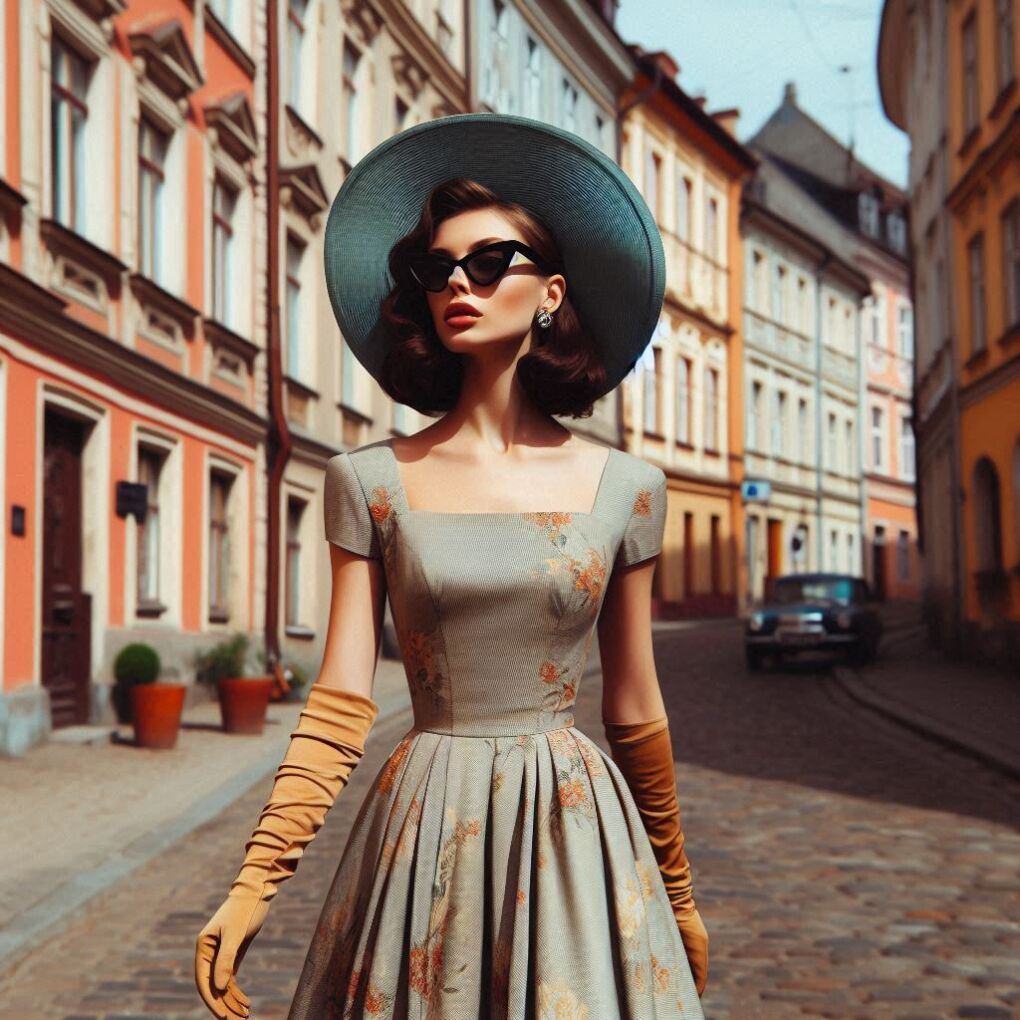
What Is Vintage Fashion?
Before we dive into the allure of vintage fashion, let’s clarify what it actually means. The term “vintage” is often used interchangeably with “retro” or “antique,” but in the fashion world, it has a specific definition.
- Vintage: Clothing that is between 20 and 100 years old
- Retro: New clothing designed to mimic styles from the past
- Antique: Clothing that is over 100 years old
True vintage fashion, therefore, refers to authentic garments that have survived decades, carrying with them the essence of their original era. Each piece is a tangible link to the past, reflecting the social, cultural, and technological contexts in which it was created.
The Historical Journey of Vintage Fashion
1920s: The Jazz Age
The Roaring Twenties saw women embracing freedom in fashion. Flappers donned loose-fitting dresses with dropped waists and shorter hemlines, perfect for dancing the Charleston. Men’s fashion featured high-waisted trousers, suspenders, and bow ties.
“Fashion is not something that exists in dresses only. Fashion is in the sky, in the street, fashion has to do with ideas, the way we live, what is happening.” – Coco Chanel
1930s: Hollywood Glamour
Despite the Great Depression, Hollywood’s golden age brought glamour to fashion. Women’s styles included bias-cut gowns, bold prints, and wide-legged trousers. Men’s fashion saw the rise of the double-breasted suit and the iconic fedora.
1940s: Wartime Practicality
World War II deeply influenced 1940s fashion. Rationing led to simpler, more practical designs. Women wore A-line skirts, tailored jackets, and turbans. Men’s fashion was dominated by military-inspired looks.
1950s: Post-War Prosperity
The post-war boom brought fuller silhouettes. Christian Dior’s “New Look” featured nipped waists and voluminous skirts. Men’s fashion saw the popularity of the “greaser” style with leather jackets and jeans.
1960s: Youth Revolution
The Swinging Sixties were all about youthful rebellion. Women’s fashion ranged from Mary Quant’s miniskirts to hippie-inspired maxi dresses. Men embraced mod fashion with slim suits and bold patterns.
1970s: Disco Era
The 1970s were defined by disco and bohemian influences. Think wide-legged pants, platform shoes, and wrap dresses for women. Men’s fashion included leisure suits, wide collars, and bold colors.
1980s: Power Dressing
The ’80s were about excess and power dressing. Women wore shoulder pads, bold jewelry, and neon colors. Men’s fashion featured Miami Vice-inspired suits and preppy looks.
1990s: Minimalism & Grunge
The ’90s saw a contrast between minimalism (think Calvin Klein’s slip dresses) and grunge (ripped jeans, flannel shirts). Men’s fashion ranged from baggy jeans to sleek designer suits.
Why Vintage Fashion Remains Relevant
- Quality Craftsmanship: Vintage garments were often made to last, with superior fabrics and meticulous construction.
- Uniqueness: In a world of mass production, vintage pieces offer individuality.
- Sustainability: Choosing vintage is eco-friendly, reducing demand for new resources.
- Investment Potential: Some vintage pieces appreciate in value over time.
- Historical Value: Each garment tells a story of its era.
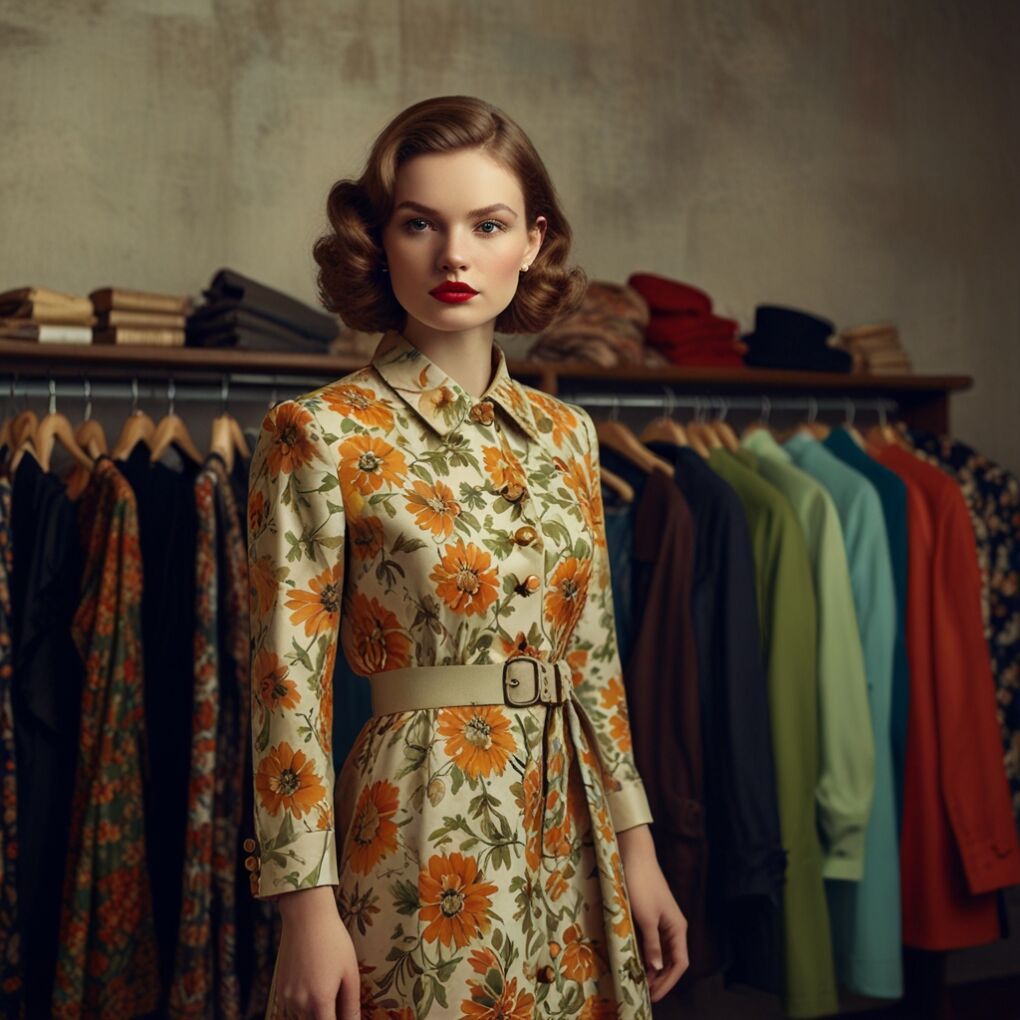
Icons Who Defined Vintage Style
Throughout history, certain figures have become synonymous with vintage fashion:
| Icon | Era | Signature Style |
|---|---|---|
| Audrey Hepburn | 1950s-60s | Little black dresses, capri pants |
| Marilyn Monroe | 1950s | Figure-hugging dresses, red lips |
| Twiggy | 1960s | Miniskirts, bold eyelashes |
| Farrah Fawcett | 1970s | Feathered hair, wide-legged pants |
| Madonna | 1980s | Lace gloves, layered jewelry |
| Kate Moss | 1990s | Slip dresses, leather jackets |
Where to Find Authentic Vintage Pieces
- Thrift Stores: Affordable, but requires patience to find gems.
- Vintage Boutiques: Curated selections, but pricier.
- Estate Sales: Great for high-end, older pieces.
- Online Marketplaces:
- Etsy
- eBay (Vintage category)
- 1stdibs (for luxury items)
- Flea Markets: Often have dedicated vintage vendors.
- Consignment Shops: High-quality, gently used items.
Caring for Your Vintage Treasures
Vintage clothing requires special care to preserve its beauty:
- Hand Wash or Dry Clean: Many vintage fabrics can’t handle machine washing.
- Spot Clean: Use gentle cleaners for stains.
- Store Properly: Use padded hangers; store in breathable bags.
- Avoid Direct Sunlight: It can fade and weaken fabrics.
- Handle with Care: Vintage pieces are often more delicate.
Incorporating Vintage into Modern Wardrobes
You don’t need to dress head-to-toe in vintage to enjoy its charm. Here are ways to blend old and new:
- Statement Pieces: Pair a vintage jacket with modern jeans.
- Accessorize: Add vintage scarves, bags, or jewelry to contemporary outfits.
- Mix Eras: Combine a ’50s skirt with an ’80s blouse.
- Updated Fits: Have vintage pieces tailored for a modern silhouette.
- Themed Events: Go all-out vintage for parties or weddings.
“I think there is beauty in everything. What ‘normal’ people perceive as ugly, I can usually see something of beauty in it.” – Alexander McQueen
The Psychology Behind Vintage Fashion’s Appeal
The attraction to vintage fashion goes beyond aesthetics. It taps into psychological and emotional needs:
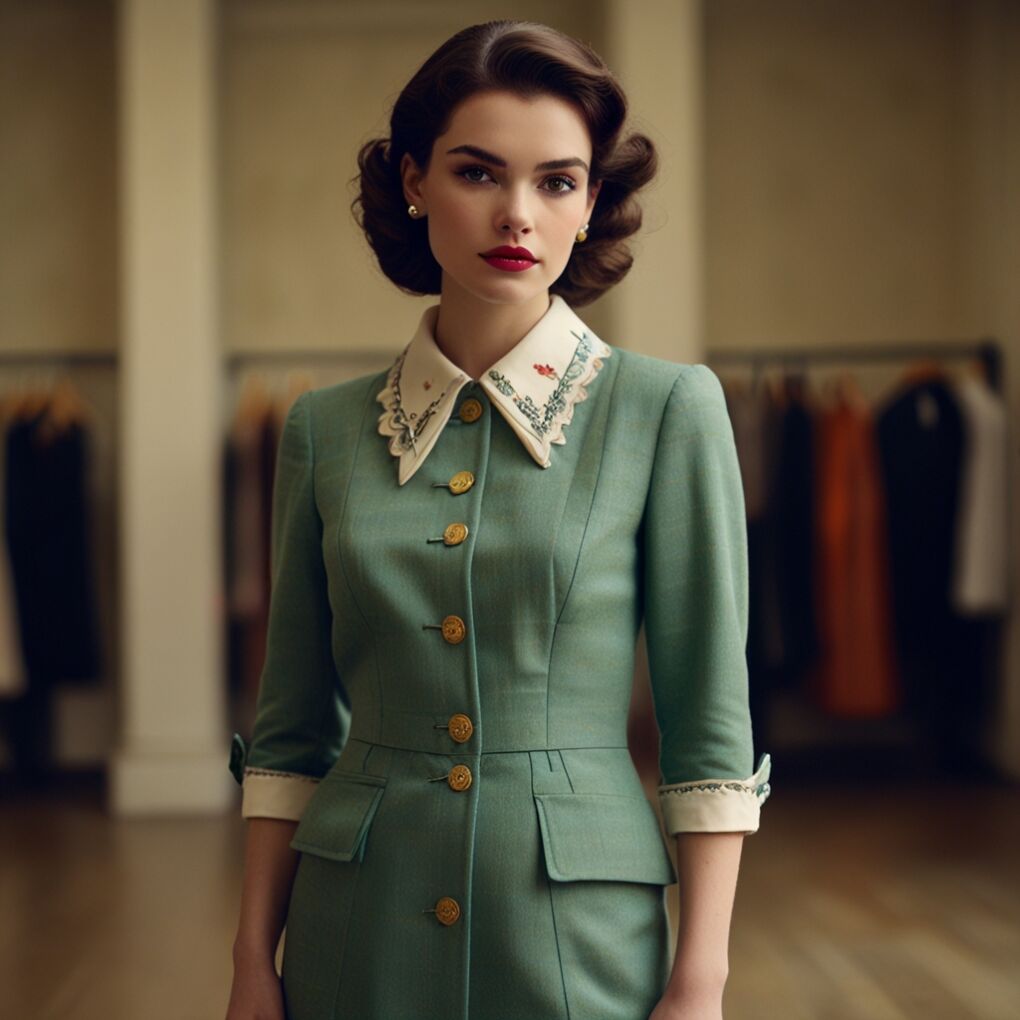
- Nostalgia: Vintage pieces evoke fond memories or romanticized eras.
- Identity: Wearing vintage helps express individuality.
- Connection: It links wearers to past generations.
- Ethics: Choosing vintage aligns with values like sustainability.
- Escapism: It offers a break from modern pressures.
Vintage Fashion in the Digital Age
The internet has transformed how we discover and acquire vintage fashion:
- Instagram: Influencers and boutiques showcase pieces.
- Pinterest: A treasure trove of vintage style inspiration.
- YouTube: Tutorials on styling and maintaining vintage.
- Virtual Try-Ons: Some sites use AR for online fittings.
- Blockchain: Authenticating high-value vintage with NFTs.
The Future of Vintage: Trends to Watch
- Y2K Revival: Late ’90s and early 2000s styles are hot.
- Sustainability Push: More brands incorporating vintage into lines.
- AI Curation: Algorithms suggesting vintage based on style.
- Virtual Vintage: Digital-only fashion in games and VR.
- Rental Services: Try vintage without commitment.
The Environmental Impact of Vintage Fashion
In an age of climate concern, vintage fashion offers a sustainable choice:
- Reduces Waste: Most clothes end up in landfills.
- Saves Resources: No new materials needed.
- Lowers Carbon Footprint: No new production emissions.
- Encourages Quality: Promotes buying fewer, better items.
“Buy less, choose well, make it last.” – Vivienne Westwood
Vintage Fashion Across Cultures
Vintage isn’t just a Western phenomenon. Many cultures cherish traditional garments:
- Japan: Kimonos passed through generations
- India: Vintage saris in handwoven fabrics
- Mexico: Embroidered huipil blouses
- Africa: Kente cloth in Ghana, bogolanfini in Mali
This global perspective reminds us that valuing heritage in fashion is universal.
Common Myths About Vintage Fashion
- Myth: It’s all outdated styles.
Truth: Many vintage looks are remarkably current. - Myth: Vintage is always expensive.
Truth: Prices vary; thrifting can be very affordable. - Myth: It only suits certain body types.
Truth: There’s vintage for every shape and size. - Myth: Vintage clothes smell old.
Truth: Proper cleaning removes odors. - Myth: It’s hard to mix with modern clothes.
Truth: Vintage often enhances contemporary looks.
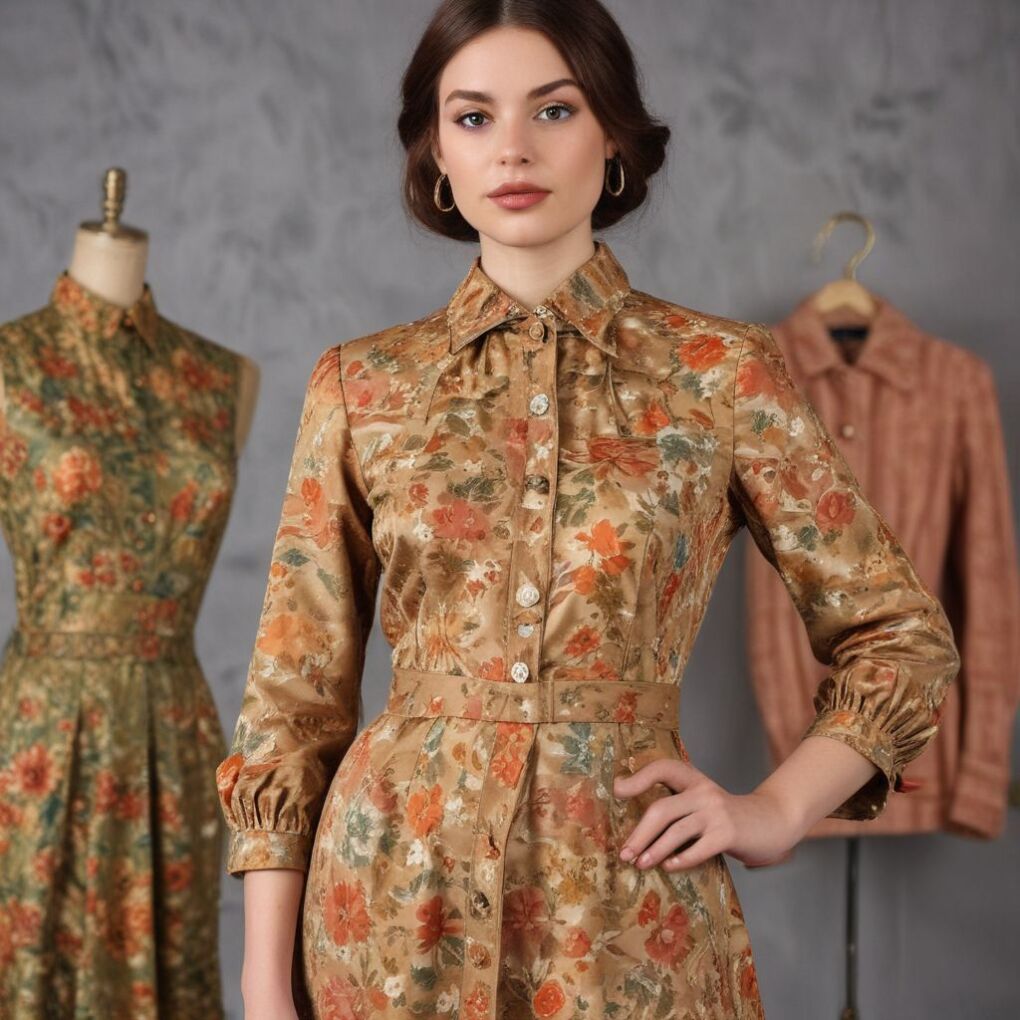
DIY Vintage: Upcycling and Customization
Can’t find the perfect vintage piece? Create it:
- Patch & Mend: Turn flaws into features.
- Dye & Paint: Update colors or add designs.
- Cut & Resew: Transform dresses into tops or skirts.
- Add Embellishments: Apply vintage brooches or buttons.
- Layer Creatively: Use vintage slips as dresses.
The Role of Vintage in Fashion Education
Many fashion schools now emphasize vintage study:
- Material Analysis: Learning about old fabrics and techniques
- Design Inspiration: Using vintage as a creative springboard
- Historical Context: Understanding fashion’s evolution
- Sustainability Focus: Teaching through vintage’s lens
This approach ensures that fashion’s rich history informs its future.
Conclusion: The Eternal Charm of Vintage Fashion
Vintage fashion is more than a trend; it’s a philosophy. In a world that often feels disposable and disconnected, vintage pieces offer substance, stories, and soul. They remind us that fashion isn’t just about what’s new, but what’s meaningful.
Whether you’re drawn to the glamour of Old Hollywood, the rebellion of the ’60s, or the boldness of the ’80s, there’s a vintage era that speaks to you. By choosing vintage, you’re not just wearing clothes; you’re carrying forward a legacy, making a statement about quality over quantity, and proving that true style is timeless.
In the tapestry of fashion history, every vintage piece is a vibrant thread. When you wear it, you’re not just dressed; you’re woven into that rich, ongoing story. So dive into the world of vintage fashion. Discover, cherish, and wear these treasures. In doing so, you’ll find that some of the most exciting fashion statements are echoes from the past, resonating beautifully in the present.
